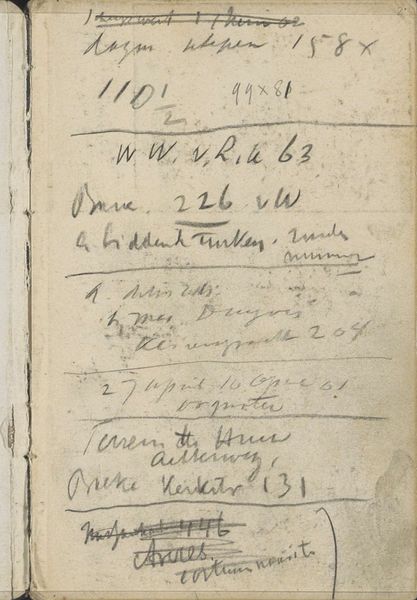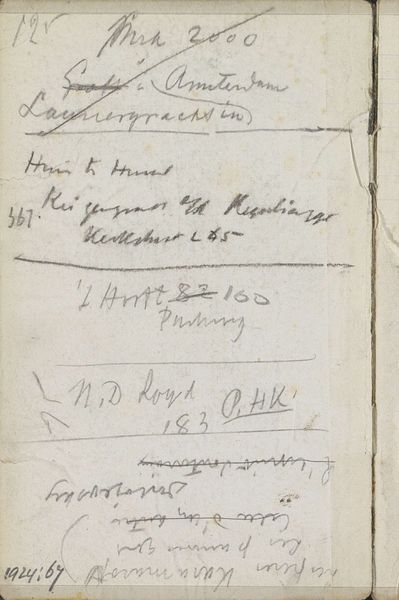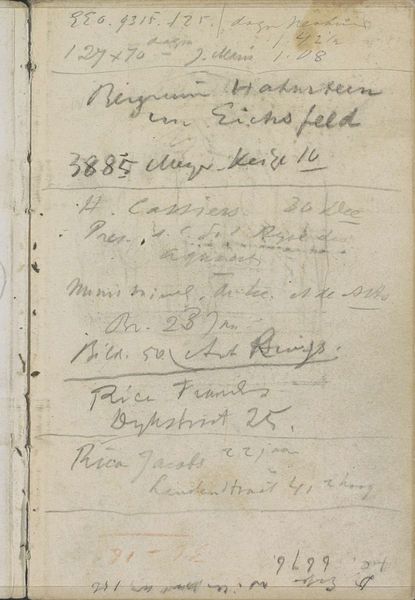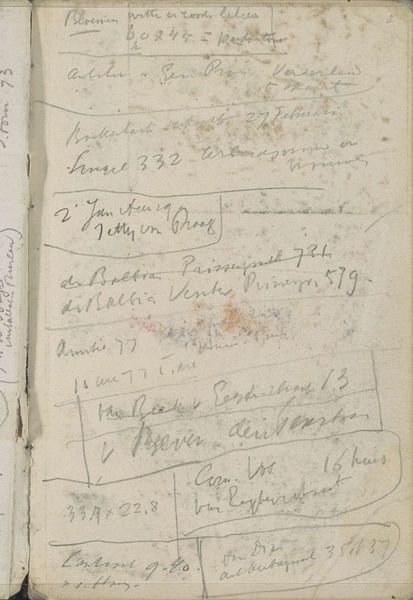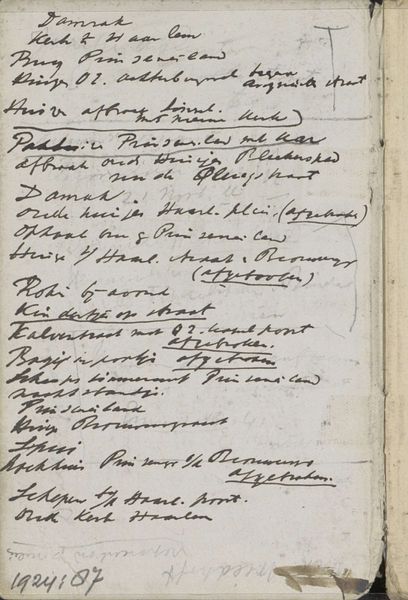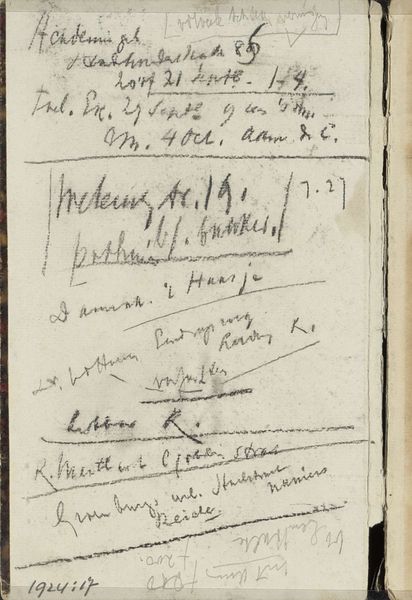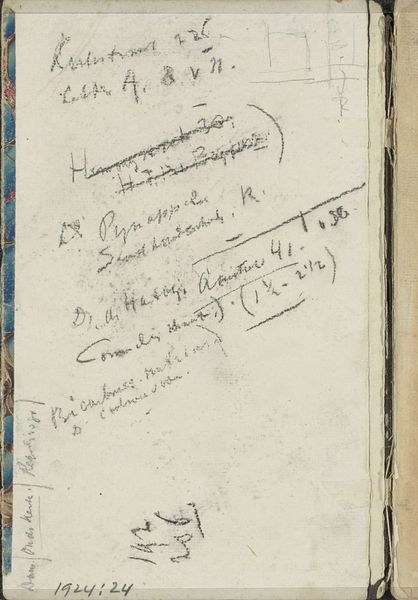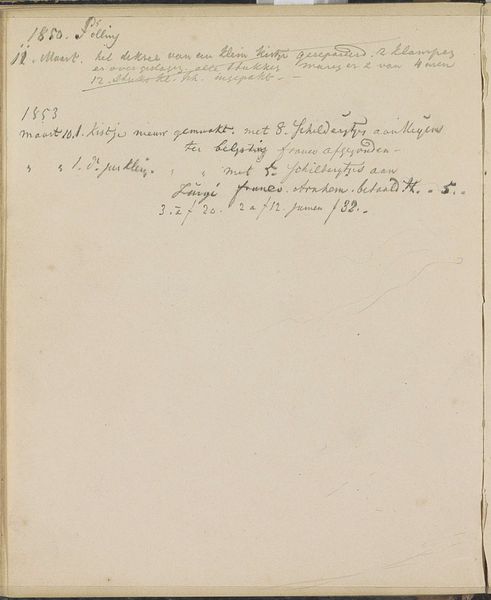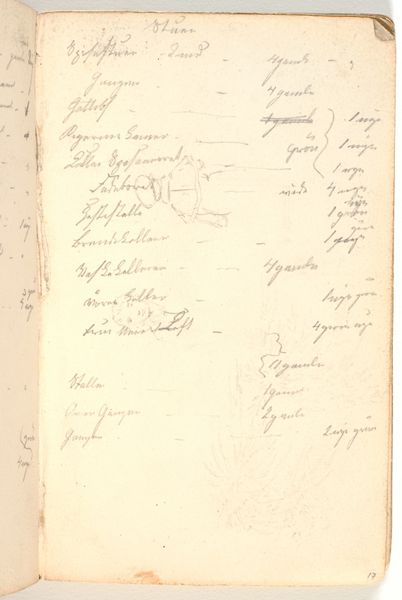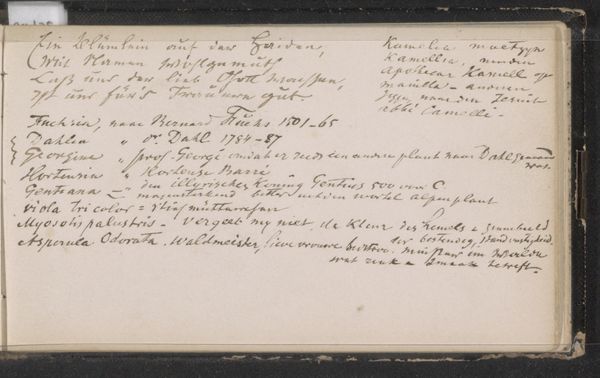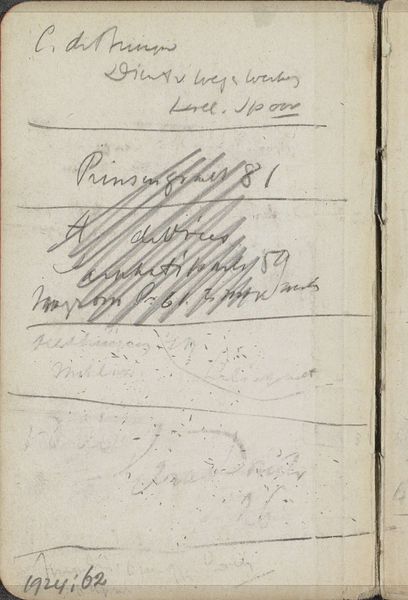
Copyright: Rijks Museum: Open Domain
Curator: What an interesting find. Here we have Louis Apol's "Names of the Crew of the Willem Barentsz," created in 1894. It is currently housed at the Rijksmuseum. Editor: Immediately, I see a ledger open to facing pages filled with tightly-written names, annotations and seemingly hastily scribbled additions to the names. The starkness evokes a sense of historical record-keeping, maybe tinged with a bureaucratic sterility that belies the gravity of its content. Curator: Exactly, Apol made this coloured-pencil and ink drawing on paper relatively late in his career. Think of Apol's larger artistic project; he focused mainly on serene winter landscapes. This departs from the Romantic landscapes he’s known for. Instead, we see documentary art and calligraphy to chronicle a ship's crew. This gives insight into late 19th-century interests. Editor: The Willem Barentsz expeditions are powerful symbols of Dutch maritime history, colonial desire and also human interaction with extreme environments. Presenting this list becomes an active acknowledgement, which counters historical erasures and draws awareness to each individual's stake within the imperial endeavor. I wonder to what extent we can interpret the use of fine art techniques – drawing, calligraphy – as attempts to legitimize or aestheticize such actions? Curator: That’s an interesting position to consider. While you could argue there's an attempt to legitimize, given the detailed work and materials, Apol moves past straightforward glorification. By recording names, the art humanizes historical actors connected to Arctic expeditions. Think of that era's cultural interest in scientific explorations, plus evolving colonial attitudes during this era. It reframes individual participation in explorations—moving beyond high seas adventures to reflect complex ties among maritime advancement and manpower. Editor: Agreed. Furthermore, to look at it as just an aesthetic exercise ignores that listing them might be the sole historical validation of these participants' existence, when social identity such as rank often determine how people participate and were represented then—an inherently political, active, endeavor. We need to confront our modern ideas of heroism with less celebrated laborers’ crucial roles on historical frontlines. Curator: Ultimately, this subtle composition incites discussions about adventure legacies and colonial labor histories as it offers space to rethink human impact from centuries ago on display now. Editor: These details bring to light not just individual stories, but bigger questions of representation concerning Dutch history's more nuanced details.
Comments
No comments
Be the first to comment and join the conversation on the ultimate creative platform.
